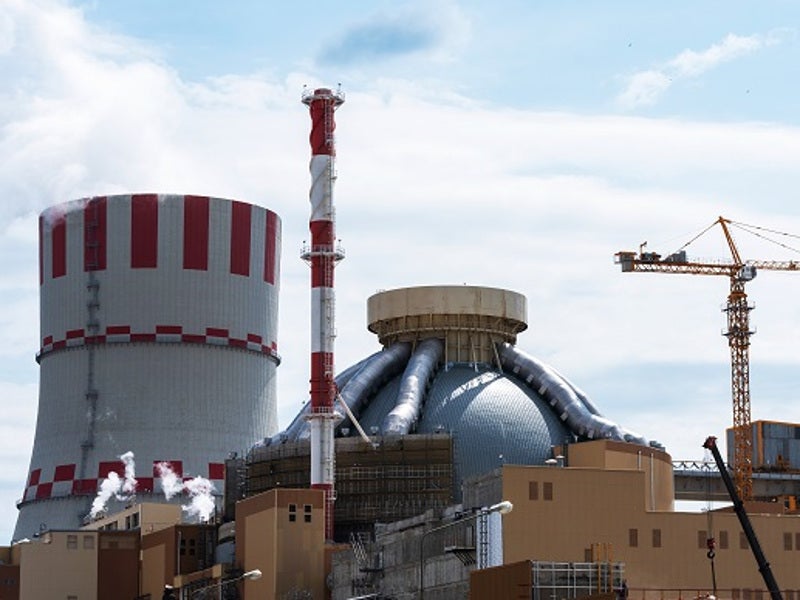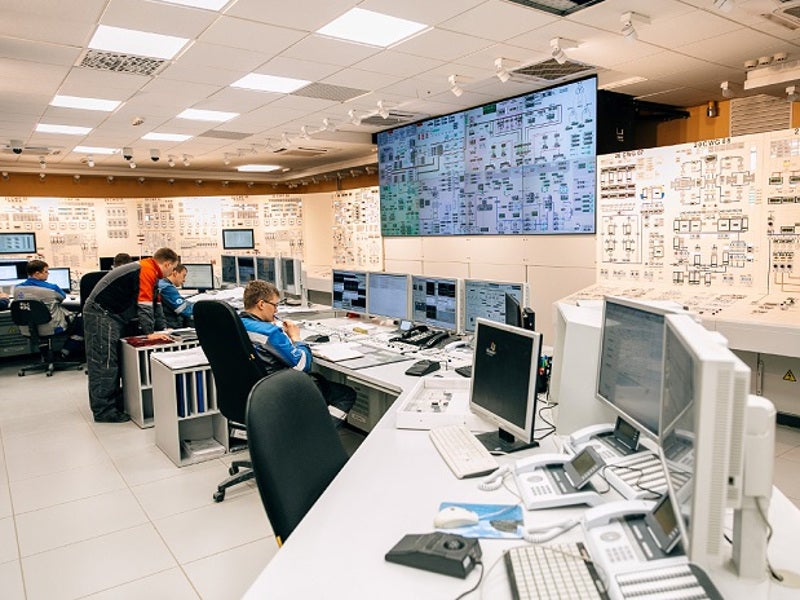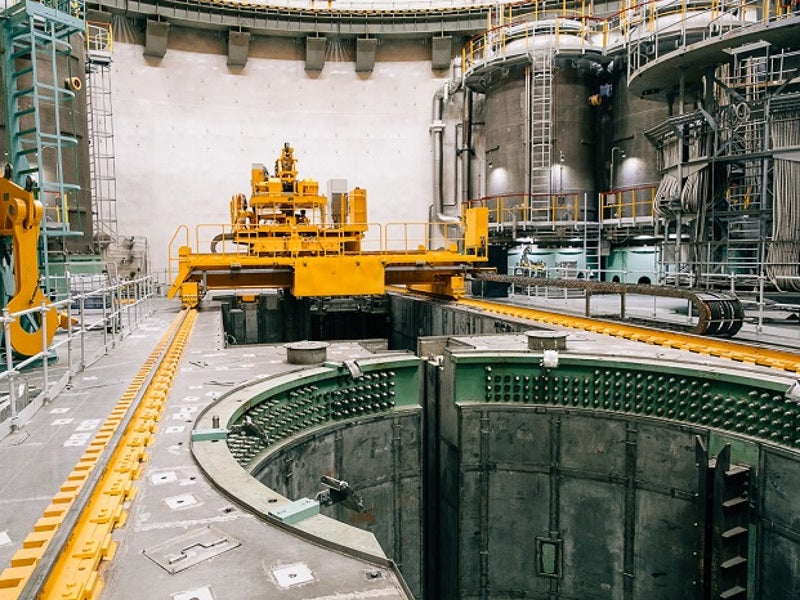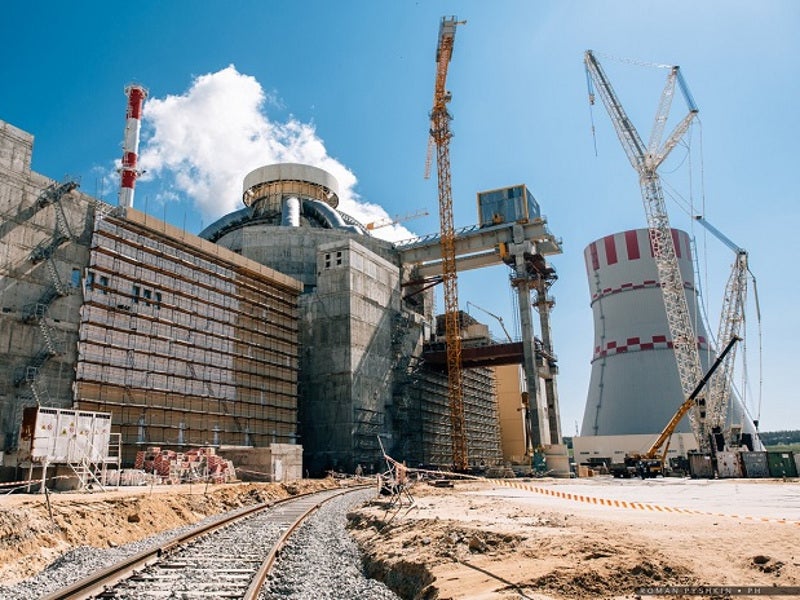Understand the impact of the Ukraine conflict from a cross-sector perspective with the Global Data Executive Briefing: Ukraine Conflict
The Novovoronezh nuclear power plant II (NNPPII) is located at the existing Novovoronezh nuclear plant site in Voronezh Oblast, central Russia. Russia’s state-owned utility Rosenergoatom plans to develop the facility with four power units featuring VVER-1200 reactors.
The NNPPII project is being implemented as part of the Russian Government’s long-term federal target programme (FTP) to make nuclear electricity account for 25% to 30% of the country’s total electricity supply by 2030, 45% to 50% by 2050, and 70% to 80% by end of the century. The current share of nuclear power in Russia’s total electricity supply is about 20%.
Two of the four planned reactors of NNPPII were constructed as part of phase one, while the other two are still in the design stage. The first unit was commissioned in February 2017, followed by the second unit in November 2019.
Novovoronezh is one of the 11 active Russian nuclear power plants (NPPs) operated by Rosenergoatom. With 33 reactors and a total installed capacity of 30.3GW, Rosenergoatom is the second-largest utility in the world in nuclear electricity generation.
Novovoronezh II plant make-up
The new NPP will be equipped with four VVER reactors rated at 1.2GW each, four PGV-1000 steam generators, 12 N-caption filters and generator sets for emergency power supply. The plant has an estimated life of 60 years.
Each steam generator has a diameter of 4.5m, height of 5.2m and weight of approximately 430t.
The N-caption filter is a vessel that will operate with a pressure of 8.4MPa and features special filtering elements. It has a diameter of 2m and height of 5m.
Construction of Novovoronezh nuclear power plant II
Construction of the first unit of the Novovoronezh II plant was started in 2008, followed by the second unit in 2009. Foundation plates for both units were completed by the end of 2009. Each plate required approximately 17,000t of concrete and 2,500t of reinforcement steel. Concreting of the foundations for the cooling towers of the two units was completed by October 2012.
Installation of circulation pumps at unit one started in August 2012, and the steam generator was installed in September 2012. Installation of the reactor building dome started in November 2013.
The first batch of 163 fuel assemblies was installed in February 2019 for unit two, with the remaining assemblies loaded within the next five days. The power start-up for unit two was initiated in May 2018.
The power start-up process involved gradually increasing the reactor power from 1%, known as Minimum Control Power (MCP), which was achieved by March 2019, to 35% and then 40%. This was followed by a long and gradual increase to 100%, which was achieved by the end of 2019.
The first power programme at unit two commenced in April 2019, following approval from the Federal Environmental, Industrial and Nuclear Supervision Service of Russia.
Reactor details of Novovoronezh nuclear power station
VVER-1200 has been designed to produce 1,200MWe of power with optimised fuel efficiency. It is planned to have a lifetime of approximately 60 years at a 90% capacity factor.
VVER technology refers to a series of pressurised water reactor designs originally developed in Russia. The Russian abbreviation for VVER stands for ‘water-cooled, water-moderated energy reactor’. Distinctive features of VVER include horizontal steam generators, hexahedral fuel assemblies and high-capacity pressurisers that provide a large reactor coolant inventory.
The reactor offers adequate emergency solutions, including a core cooling system, backup diesel power supply, advanced refuelling machine, computerised reactor control systems, backup feedwater supply and reactor SCRAM system.
Contractors involved with the Novovoronezh II nuclear project
Stroytransgaz was contracted for the construction-assembly work of the new power plant while OKB GIDROPRESS designed the VVER reactors.
German diesel and gas manufacturer Tognum supplyied MTU Onsite Energy emergency gensets worth $37m under a sub-contract with Zvezda Energetika.
Glazovsky zavod Khimmash, a part of OMZ Group, supplied the N-caption filters for the power plant under a sub-contract signed in July 2009.
Machine building plant ZIO-Podolsk was responsible for the engineering and technical assistance of the steam generators, while engineering company ZIOMAR developed detailed drawings and packaging for the generators.
Power Machine was responsible for the design, manufacture and supply of turbine units, including the steam turbines, capacitors and turbine generator sets.
AREVA will provide safety instrumentation and control systems for the four nuclear reactors at Novovoronezh II as part of a contract signed in 2009.
Atomenergoproekt was appointed as a general contractor for the design and construction of the Novovoronezh II, and ARAKO will supply the valves.
Details of existing Novovoronezh NPP
Novovoronezh plant supplies power to Voronezh Oblast, Belgorod, Lipetsk and Tambov regions. It is the first Russian NPP to have VVER reactors.
It has seen the commissioning of five VVER reactors in its history, with its first unit equipped with VVER-210 and commissioned in 1964. The second (VVER-365), third (VVER-440), fourth (VVER-440) and fifth (VVER-100) units were commissioned in 1969, 1971, 1972 and 1980, respectively.
The first unit was permanently decommissioned in 1988, while the second was permanently decommissioned in 1990. Unit three of the plant was decommissioned in 2016, while unit four was shut down for modernisation works in 2018 and resumed full-scale operation in January 2019.
Unit five of the plant underwent a $453m upgrade and was licenced to operate until 2035. It has advanced features similar to those of a Generation III reactor.






